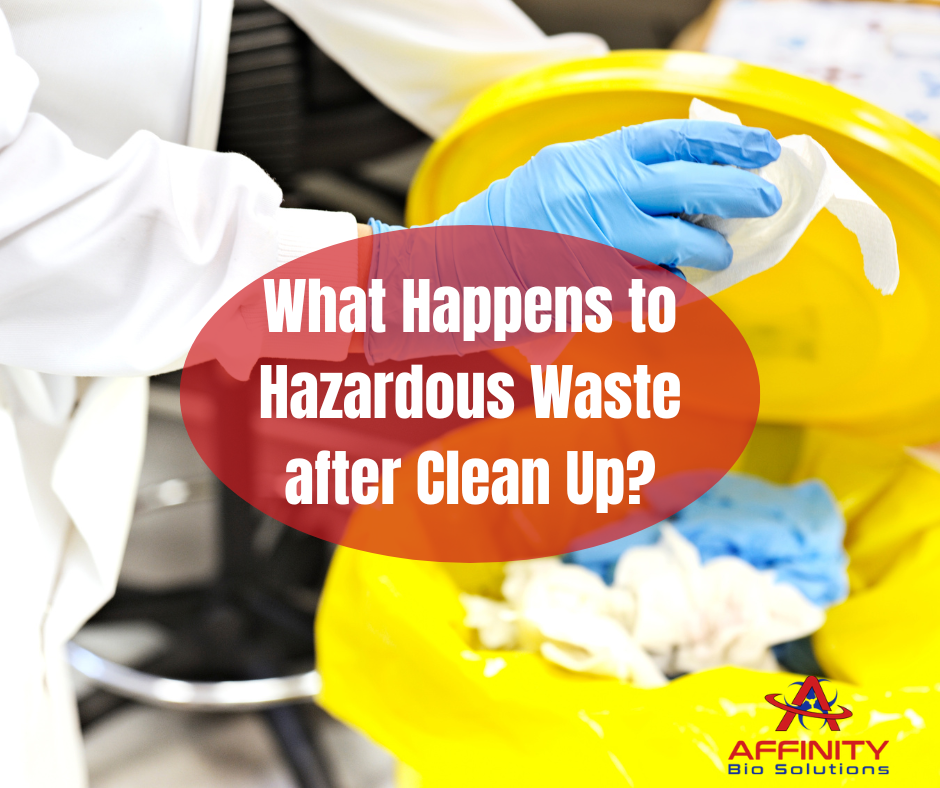
Hazardous waste includes batteries, household cleaning agents, and paints from different companies. There are strict regulations regarding their disposal to avoid damaging the environment. However, some things happen after the removal of hazardous waste. The waste lifecycle after clean-up is unfamiliar to many. Keep reading to find out what happens to hazardous waste after clean-up.
What is a Hazardous Waste?
Hazardous waste is harmful to humans and the environment. The content is capable of harming living things. Hazardous waste is a mixture of waste from many companies, such as industrial manufacturing water and batteries. There are strict regulations for disposing of hazardous waste, whether liquid, solid gasses, or sludges.
However, not all waste is hazardous. Here is how to determine harmful waste.
- Hazardous waste must be solid waste.
- Check the waste with regulation.
- The generator will determine the type of waste. Suppose it is hazardous waste, ensure the EPA petition the waste under the RCRA Subtitle C regulation.
Recycling After Clean Up
After cleaning up, the clean-up company disposes of hazardous waste to companies with the right equipment to handle it. The regulation is to protect human health and the environment. These companies are temporary storage. They store large volumes of waste, and activities in the area are risky to health. The government ensures these facilities have generic management standards, hazardous waste management units, and other additional precautions to protect the soil, air, and groundwater. While the disposal company treats or incinerates the waste, some are recycled safely and effectively. However, poor disposal leads to leaks, fires, spills, and contamination. Environmental protection agencies monitor the process to ensure recycling is not detrimental to human health.
What are the Benefits of Recycling Hazardous Waste?
Disposing of hazardous waste has many adverse effects on the environment, which are prevented by recycling, reusing, and reclamation. In addition, recycling the waste after clean-up protects natural resources, adds to the economy, and reduces the consumption of raw materials and energy.
Environmental Benefits
Recycling hazardous waste has several interrelated environmental benefits, including:
- Reduces dependence on raw materials
- Reduces pollution
- Reduces energy use
- Reduces the amount of garbage taken for treatment
There are several interrelated environmental benefits of recycling hazardous waste, including;
- reducing the consumption of raw materials,
- reducing pollution,
- reducing energy use and
- reducing the volume of junk that must be treated and disposed of.
Here’s how they are interconnected;
Recycling hazardous materials after clean-up reduces the generation of greenhouse gasses (GHGs). If waste is recycled, there will be less need for raw materials and manufacturing products. In addition, it decreases energy demand, reducing the use of fossil fuels. These practices lead to lower emissions of GHGs, lowering the impacts of climate change and decreasing air pollution.
Lastly, recycling waste after clean-up reduces the amount of waste sent for treatment and disposal. It reduces the number of needed landfills and incinerators. In addition, it reduces the energy required to operate these systems, leading to less pollution.
Contact Affinity Bio Solutions for All Your Professional Biohazard Cleanup Needs
- Biohazard Cleanup & Removal
- Crime Scene Cleanup | Trauma Scene Cleanup
- Unattended Deaths & Decomposition
- Suicide Cleanup
- Medical Waste Pick-Up, Transport and Disposal
- Water Damage | Flood Extraction
- Hoarded Environment & Hoarder Home Cleanup
- Vehicle Accidents | Vehicle Biohazard Cleanup
- Bodily Fluids | Blood Cleanup
- Odor Remediation | Odor Removal
- Homeless Encampment Cleanup & Biohazard Removal
- Abandoned Building and Foreclosure Cleanout
- Pest Removal in Arizona
